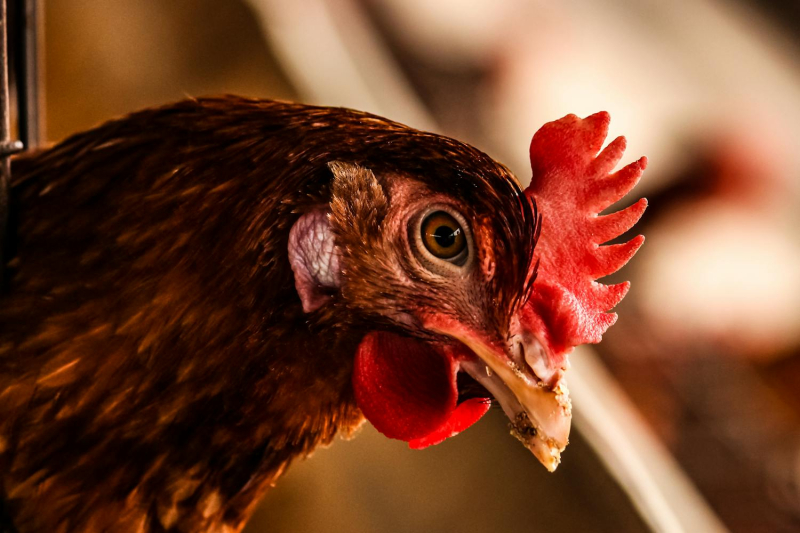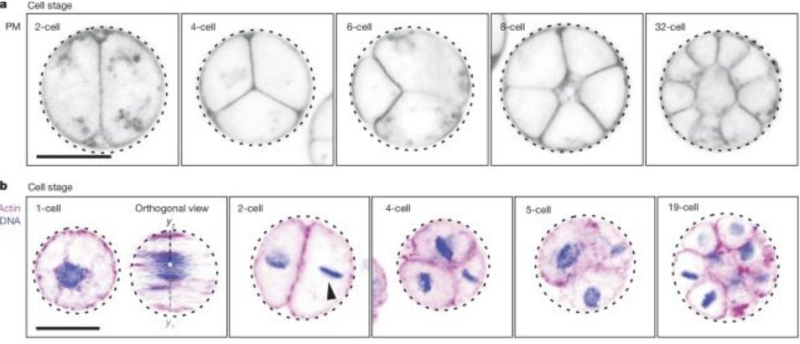
© Souvik Pradhan/Pexels
Which came first, the chicken or the egg? ? This age-old question, which symbolises the paradox of the origins of life, may have found its answer in the depths of the sea. An international team led by biochemist Marine Olivetta of the University of Geneva has just shed light on a microscopic organism with a particular functioning. Its mode of reproduction could revolutionize our understanding of embryogenesis, the process of an organism's development from fertilization of the egg to the formation of the embryo.
The Chromosphaera perkinsii, lurking in the sediments of shallow seas, uses mechanisms eerily similar to those that have been enabling embryos to develop in eggs today, and have been doing so for more than a billion years. The discovery suggests that the genetic “recipe” for the egg existed long before the egg itself. The results of their work were published on November 6 in the journalNature.
The secrets of an ancestral cell division
In the long cycle of evolution, C. perkinsii occupies a unique position. Belonging to the Ichthyospora family (a group of eukaryotes close to animals and fungi, but distinct from both), this single-celled organism separated from the lineage that would give rise to animals more than a billion years ago.
Unlike its parasitic cousins, it leads a free-living existence in marine sediments. Biochemist Omaya Dudin of the Swiss Federal Institute of Technology emphasizes the extraordinary nature of this discovery: “Although unicellular, C. perkinsii already exhibits sophisticated multicellular coordination and differentiation processes, characteristics that were thought to be exclusive to complex organisms such as animals ».
This remarkable capacity thus lays the foundations for a new theory: the mechanisms necessary for the formation of an embryo; and therefore for oviparous reproduction (animals that lay eggs whose embryos develop outside the mother's body); were already present in the genetic arsenal of life well before the first animals appeared. As if nature had developed the operating instructions before even building the machine.
Amazing embryonic mimicry
The reproductive process of C. perkinsiibears a striking resemblance to the early stages of embryonic development seen in a fertilized egg. The organism divides by a process called palintomy, rapidly creating many daughter cells without any intermediate growth phase. This division results in a hollow structure resembling a microscopic raspberry, similar to the blastula (the first stage of embryonic development) that an animal embryo forms in the egg.
200% Deposit Bonus up to €3,000 180% First Deposit Bonus up to $20,000
Diagram of cell divisions of Chromosphaera perkinsii, illustrating an organization reminiscent of the early stages of animal embryogenesis. © Olivetti et al., Nature
Another remarkable fact in C. perkinsii : this cell colony has at least two types of differentiated cells, maintaining this complex organization for a good part of its life cycle. This early cellular specialization is surprisingly reminiscent of the early stages of development of a chicken embryo in its egg. In particular, researchers have observed that these cells work together in a coordinated manner before dispersing to become independent, thus mimicking the fundamental processes of embryogenesis.
A missing link in the history of life
The discovery of C. perkinsiiraises a fundamental question: are we facing the common ancestor that holds the key to the enigma of the chicken and the egg, or is this an example of convergent evolution where nature has reinvented the same solutions? ? While this mode of development seems unique among the Ichthyosporeans studied to date, its existence proves that the essential mechanisms required for the formation of embryos – and therefore eggs – already existed in the genetic heritage of primitive organisms.
The researchers suggest that: “C. perkinsii represents a transitional form between temporal and spatial cellular differentiation, providing insight into the evolutionary mechanisms that led to the emergence of animal multicellularity“. In other words, this organism could be the missing link between the simple reproduction of single-celled organisms and the complex mechanisms of embryonic development that we see in today's eggs.
The answer to the chicken-egg conundrum could therefore be: Neither came first, but rather the genetic program that would make them possible. The building blocks of embryonic development were already present, but were simply waiting for theright moment in evolutionary history to be fully expressed in the formation of the first eggs. Further research on cellular differentiation in C. perkinsii will shed further light on two crucial aspects: the origins of animal multicellularity, but also the deep roots of oviparous reproduction.
- Chromosphaera perkinsii, a single-celled marine organism, uses mechanisms similar to those of animal embryos, dating back more than a billion years.
- Its mode of cell division is reminiscent of the early stages of embryogenesis, suggesting that the genetic basis of oviparous reproduction existed before eggs themselves.
- This discovery sheds new light on the evolutionary mechanisms that led to animal multicellularity and egg development.
📍 To not miss any news from Presse-citron, follow us on Google News and WhatsApp.
[ ]

